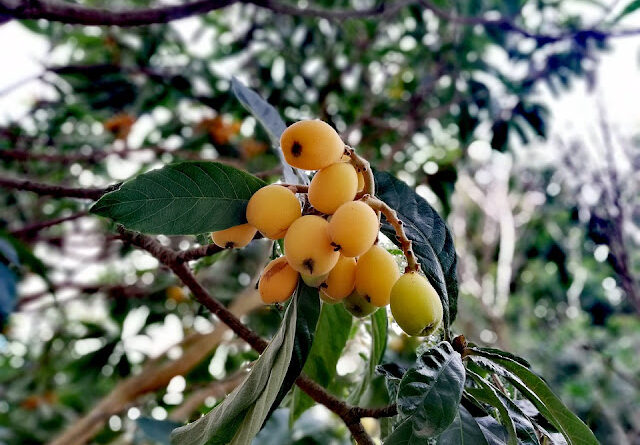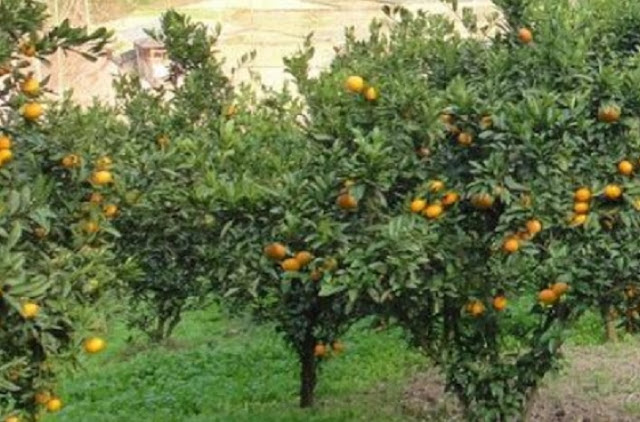Loquat Cultivation in India; A complete information Guide
Loquat Cultivation in India; A complete information Guide
Loquat (Eriobotrya japonica) is believed to be native of China but its cultivation in Japan has been very popular for a long. It belongs to the family Rosaceae to which all important temperate fruits belong. It is mainly grown in Punjab and Uttar Pradesh In south India, it is grown can ornamental tree. It is an evergreen subtropical tree. It can stand considerable frost and tropical heat. However, it does not fruit well under these conditions and is grown as an ornamental tree. It does not fruit well in areas with warm winter. It can be grown up to an elevation of 2000 meters but fruits are of poor quality.
Soil and Climate Requirement for Loquat Cultivation;
Loquat requires subtropical to mild temperate conditions for its growth. The loquat plant has more resistant to heat and drought in comparison to the cold. Temperatures below then 0-degree celsius cause chilling injury to the plants
It thrives on different types of soils with good drainage facility. But a well-drained organic-rich loamy soil with a pH range of 5.8 – 6.8 is best suited for it.
1) On the basis of time of maturity
Early season varieties (Mature from the middle of March): Golden Yellow, Improved Golden Yellow, Large Round, Pale Yellow, Thames Pride
Midseason varieties (Mature from last week of March):
Early season varieties (Mature from the middle of March): Golden Yellow, Improved Golden Yellow, Large Round, Pale Yellow, Thames Pride
Midseason varieties (Mature from last week of March):
Fire Ball, Improved Pale Yellow, Mammoth, Safeda
Late season varieties (Mature from the middle of April): California Advance and Tanaka
B. On the basis of self fruitfulness
Late season varieties (Mature from the middle of April): California Advance and Tanaka
B. On the basis of self fruitfulness
Self unfruitfulness has been observed in loquat varieties. Therefore, a pollenizer variety should be planted along with the main variety. On the basis of self fruitfulness, the varieties can be grouped as follows:
Self-incompatible: Golden Yellow, Improved Golden Yellow, Pale Yellow, and Agra Large
Partially self-incompatible: Large Round, Fire Ball, Thames Pride, California Advance, and Tanaka
Self-incompatible: Golden Yellow, Improved Golden Yellow, Pale Yellow, and Agra Large
Partially self-incompatible: Large Round, Fire Ball, Thames Pride, California Advance, and Tanaka
Propagation ;
Seed Propagation;
Traditionally loquat is propagated through seeds. The loquat plant propagated through seed has a very rapid growth but the seed propagated plant has a too long fruit-bearing period and fruits are inferior in quality as well as has a lot of fruit variability Hence seedling from the seeds are used as a rootstock.
Vegetative Propagation ;
It is generally multiplied by simple approach grafting but ‘T’ budding on the seedling rootstock of loquat is more convenient and successful. Budding can be done in February and September but preferably in February. Planting
Planting; Plants should be planted during July-August in the pits of 1x1x1 meter size. Plants can be planted in spring season also if sufficient irrigation facility is available
It is generally multiplied by simple approach grafting but ‘T’ budding on the seedling rootstock of loquat is more convenient and successful. Budding can be done in February and September but preferably in February. Planting
Planting; Plants should be planted during July-August in the pits of 1x1x1 meter size. Plants can be planted in spring season also if sufficient irrigation facility is available
Spacing; plants should be planted 8 meters apart.
Pruning
Annual pruning should be done to regulate the crop. The flowers are borne mostly from July to August. However, flowering continues to January to a little extent. The flowers appearing in October-November give the best crop. therefore, branches should be trimmed off 5 cm below the tips at the end of way. This encourages new shoots which flower during October-November. removal of some fruits results in a better quality of fruits.
Manuring
Loquat Plant requires heavy fertilization to produce heavy, luxuriant foliage and large amount of fruits. The recommended fertilizer dose is 750g N, 300g P and 750g K per year/plant should be given upto 3 years age. In the bearing orchards of loquats, apply 50 kg FYM per plant every year along with other fertilizers. After the plant age of 3 years, fertilizer dose of 1kg N, 0.5 kg P and 0.5kg K per plant per year should be applied. The nutrients should be applied in 20-30 cm deep and 30 cm wide trench along the drip line of the tree. Apply recommended micronutrients, if deficiency symptoms are observed. Micronutrient deficiency should be corrected by foliar spray of a particular micronutrient.
Flowering
Flowering in loquat takes place on the new growths in the season. First flowering is observed during August-September in which most of the flowers drop down and the remaining flowers are considered useless from the fruiting point of view. It is because flowers do not have viable pollens. The second flowering is during October-November which is valuable from the fruiting point. Fruits from December-January flowering do not develop properly due to early summer. Thus, early fruit setting will result in better fruiting.
Pruning
Annual pruning should be done to regulate the crop. The flowers are borne mostly from July to August. However, flowering continues to January to a little extent. The flowers appearing in October-November give the best crop. therefore, branches should be trimmed off 5 cm below the tips at the end of way. This encourages new shoots which flower during October-November. removal of some fruits results in a better quality of fruits.
Manuring
Loquat Plant requires heavy fertilization to produce heavy, luxuriant foliage and large amount of fruits. The recommended fertilizer dose is 750g N, 300g P and 750g K per year/plant should be given upto 3 years age. In the bearing orchards of loquats, apply 50 kg FYM per plant every year along with other fertilizers. After the plant age of 3 years, fertilizer dose of 1kg N, 0.5 kg P and 0.5kg K per plant per year should be applied. The nutrients should be applied in 20-30 cm deep and 30 cm wide trench along the drip line of the tree. Apply recommended micronutrients, if deficiency symptoms are observed. Micronutrient deficiency should be corrected by foliar spray of a particular micronutrient.
Flowering
Flowering in loquat takes place on the new growths in the season. First flowering is observed during August-September in which most of the flowers drop down and the remaining flowers are considered useless from the fruiting point of view. It is because flowers do not have viable pollens. The second flowering is during October-November which is valuable from the fruiting point. Fruits from December-January flowering do not develop properly due to early summer. Thus, early fruit setting will result in better fruiting.
Irrigation Management
Loquat is an excellent drought-tolerant plant due to its broad, thick, leathery leaves, it just requires sufficient moisture in the soil throughout the growing period. As the loquat tree blossom early, irrigation prior to the swelling of blossom buds is essential. Loquat tree requires two or three irrigation During the period of growth to maturity
The fruiting problem in Loquat;
Self-sterility problem is found in the varieties and therefore effective fruiting is possible when they are inter-planted e.g. for Golden yellow variety California Advance acts as a pollinizer. Fruiting will be poor if only a single variety is planted in the orchard.
Self-sterility problem is found in the varieties and therefore effective fruiting is possible when they are inter-planted e.g. for Golden yellow variety California Advance acts as a pollinizer. Fruiting will be poor if only a single variety is planted in the orchard.
Harvesting and Yield
It takes about four years to flower after planting. Fruits start ripening from the middle of March and continue up to April in later varieties. Fruits are harvested when fully ripe on the tree otherwise half-ripened fruits will not develop proper color and flavor. About 20-25 kg is the average yield per tree/year.
It takes about four years to flower after planting. Fruits start ripening from the middle of March and continue up to April in later varieties. Fruits are harvested when fully ripe on the tree otherwise half-ripened fruits will not develop proper color and flavor. About 20-25 kg is the average yield per tree/year.
Read Further;




